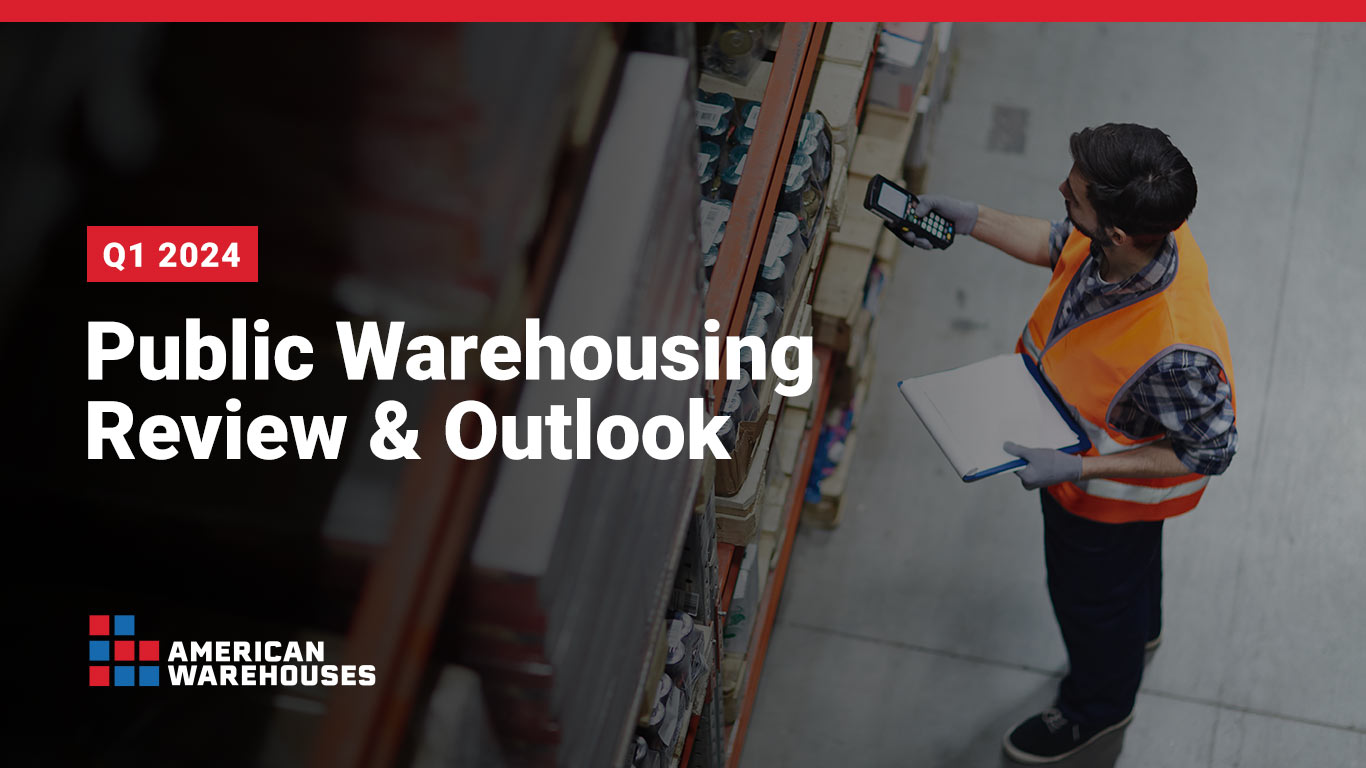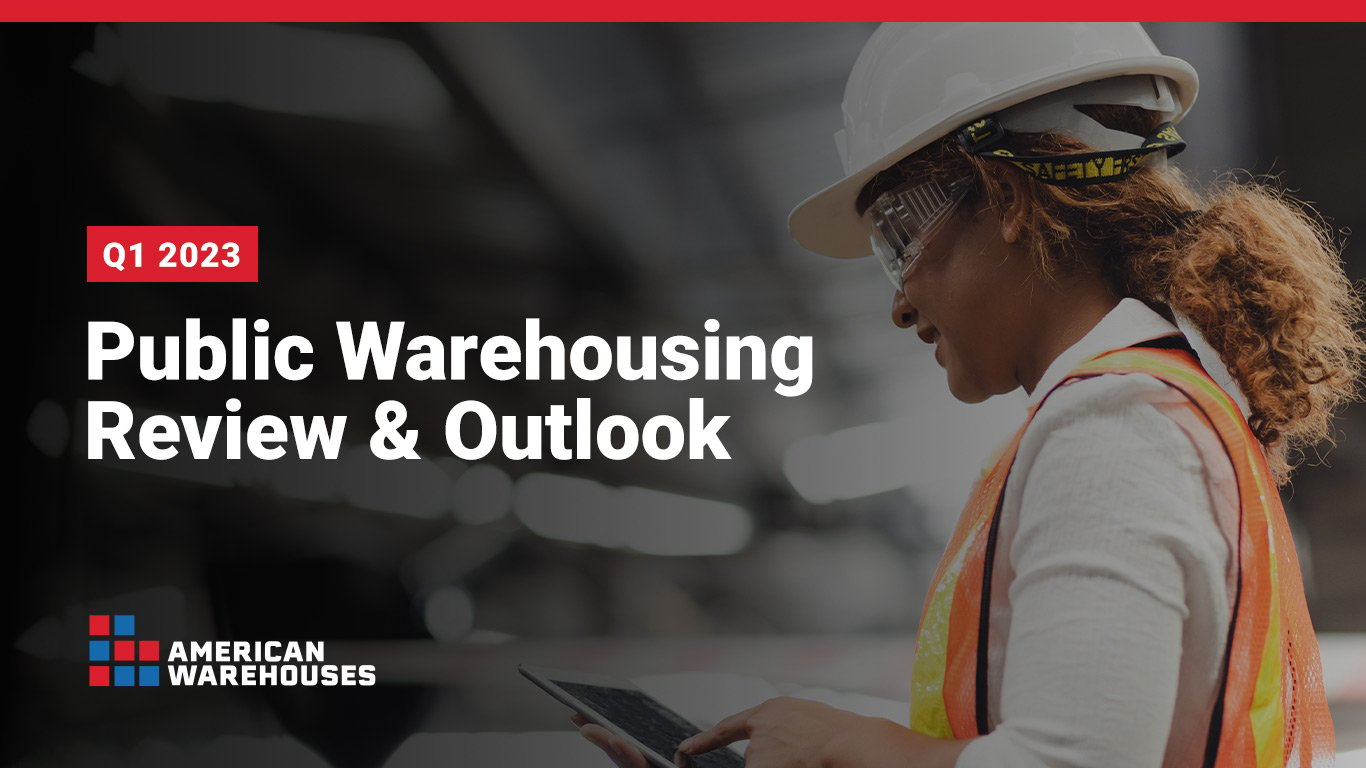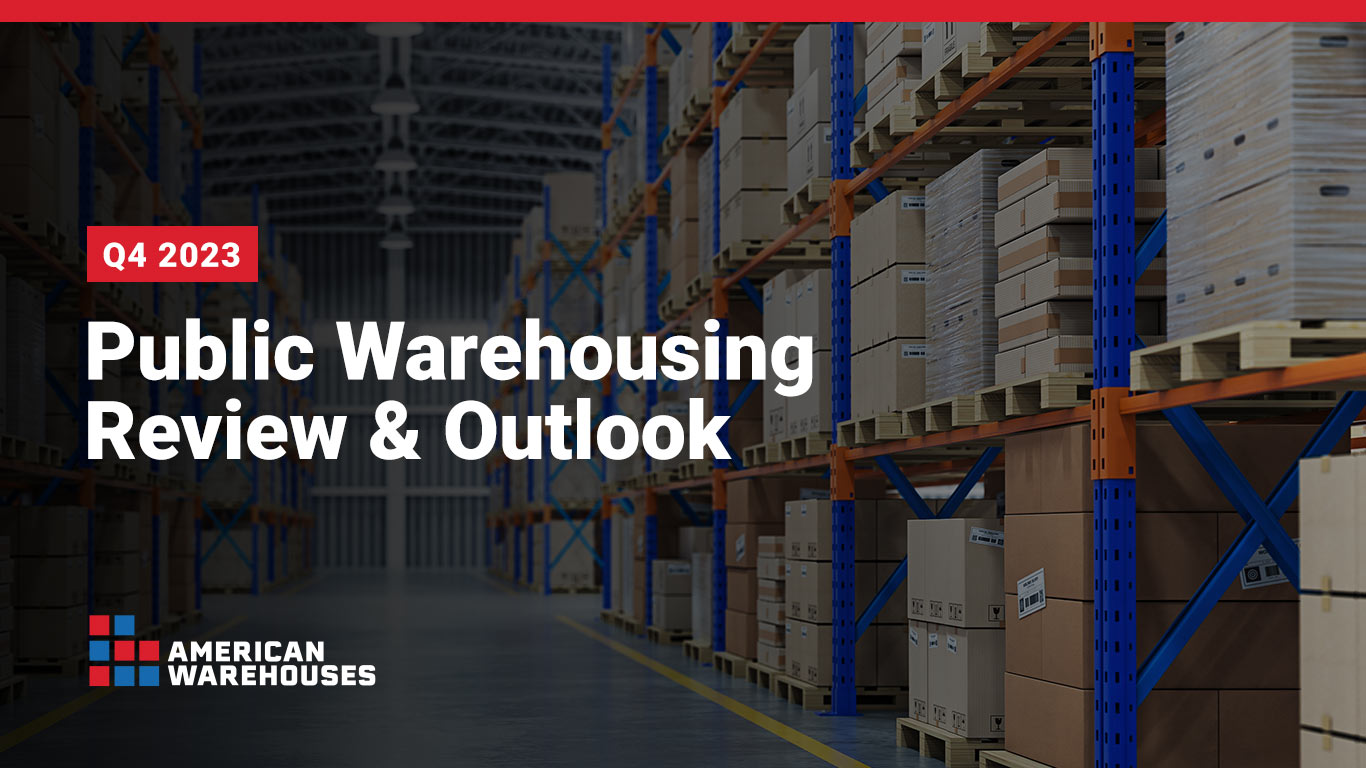Q1 2024 Public Warehousing Review & Outlook

In Q1 2024, the warehousing and chemical and advanced materials industry grappled with ongoing economic instability, geopolitical conflicts, and extreme climate conditions that affected power, supply chains, and logistics globally.
As we look ahead, however, the chemical warehousing and storage market is poised for significant expansion and unprecedented opportunities, but the industry can’t overlook the formidable challenges ahead.
The public warehousing market is projected to grow by nearly $60 billion with a compound annual growth rate (CAGR) of 5.6 percent through 2028. This is driven by various factors, including the rise of small and medium-sized enterprises (SMEs), a heightened focus on reducing costs, and the increasing emphasis on delivery strategy.
Despite this, there has also been a significant slowdown in leasing activity for warehouse space across various sectors due to increased storage costs, higher interest rates, and evolving consumer spending habits, resulting in reduced storage availability.
In our quarterly report, we delve into the current landscape of public warehousing, dissecting key trends and technological innovations shaping the industry.
Q1 2024 Recap & Q2 Predictions
The previous quarter was marked by myriad challenges and disruptions that reverberated throughout supply chains worldwide, prompting a critical examination of existing strategies and resilience measures.
The Red Sea shipping crisis, sparked by Houthi rebel attacks, is diverting vessels away from the Suez Canal, which has led to longer routes and increased transport times and costs. According to J.P. Morgan, 30 percent of international container trade has been affected, and supply chains have been disrupted, causing surges in shipping prices, particularly on routes from Asia to Europe.
Domestically, the collapse of Baltimore's Francis Scott Key Bridge in March forced the closure of one of the East Coast’s biggest ports, the Port of Baltimore. According to the Wall Street Journal, the weekly trade impact of the port closure is estimated to be approximately $1.7 billion, factoring in the value of various shipments such as consumer goods, automobiles, and coal.
There has been a massive ongoing effort to clear the bridge debris to restore the shipping lane and find alternative routes in the short term to mitigate the supply chain disruption. In the meantime, the diversion through other ports and the additional transportation time may impact consumer prices and logistics costs.
These issues, along with economic uncertainty stemming from heightened interest rates and the political climate of a presidential election year, underscore the need for businesses to adapt swiftly and proactively to evolving market conditions.
Q1 2024 Takeaways
- Continued supply chain disruptions will increase transportation costs and shipping times, potentially driving up prices for consumer goods and logistics services.
- Companies are pivoting toward diversification, localization, and nearshoring to minimize reliance on single-source suppliers and mitigate risks from supply chain issues.
- Warehouses will increasingly utilize AI and robotics capabilities to expedite inventory optimization, shipping and delivery methods.
Industry Trends & Challenges
Based on data from the U.S. Bureau of Labor Statistics, the warehousing and storage sector experienced a slight uptick in wages and hourly earnings in Q1, accompanied by a small decrease in weekly hours and overall employment figures. This could indicate a potential surge in demand within the industry, however, higher wages could translate to tighter profit margins or necessitate higher prices for warehousing services.
The nearshoring trend continues to fuel increased business investments along the U.S.-Mexico border as many executives prepare for the unexpected. As Transport Topics notes, Mexico is the leading U.S. importer, with nearly 15 percent of total imports, and businesses are seeking to capitalize on current and anticipated growth opportunities in the region.
A survey published by Axios indicated the number of companies taking steps to nearshore production grew from 17 percent in 2022 to 42 percent in 2023, highlighting executives' priority on better preparation for unforeseen events.
The continued rise of online retailing has also heightened consumer expectations for faster deliveries and boosted the need for more diverse public warehousing solutions, including bonded and non-bonded storage, and ambient and temperature-controlled facilities to meet ever-evolving logistics requirements.
Trends Takeaways
- The public warehousing and storage market is projected to grow throughout 2024, driven by increasing demand for international storage solutions.
- Nearshoring will continue to drive manufacturing and storage operations closer to the U.S.-Mexico border.
- Online retailing has driven increased demand for public warehousing solutions that meet particular specifications.
A Greater Focus on Sustainability
Climate change has continued to present formidable challenges to supply chains, with extreme weather events disrupting operations, damaging infrastructure, and elevating risks for inventory management and transportation. In addition, rising sea levels are endangering warehouses located near ports, making flood insurance coverage and storage location important considerations when choosing a third-party logistics provider.
In a continuation of another disconcerting climate trend, 2023 was the hottest year on record, and according to the National Oceanic and Atmospheric Administration (NOAA), there’s a one-in-three chance that 2024 will be even warmer, and a 99 percent likelihood that 2024 will rank among the top five warmest years ever recorded. NOAA also reported that the 2023-2024 winter season was the warmest it's documented, posting an average temperature of 41.1°F, which was 7.2°F above average.
According to ClimateTrade, a decarbonization firm, the European Union (EU) has broadly escalated such policies for transportation and logistics to improve transparency and accountability to meet sustainability goals.
The EU is implementing measures to curb carbon emissions from all large ships measuring 5,000 gross tonnage and above entering EU ports, regardless of their country of origin. Regulations include a border adjustment mechanism to tax carbon-intensive imports like aluminum, steel, and cement starting in 2026, along with expanding the EU Emissions Trading System to cover maritime transport from 2025, gradually phasing out free allowances by 2034. New regulations mandate the use of sustainable fuels in shipping sectors, requiring a minimum of 2 percent by 2025 before increasing significantly to 80 percent by 2050—the year many countries and firms are aiming to reach net zero emissions.
Extended Producer Responsibility (EPR) laws are also becoming increasingly prevalent internationally and at the state level in the U.S., imposing accountability measures on manufacturers for the entire lifecycle of their products to encourage more innovative, eco-friendly designs. Logistics companies play a crucial role in EPR implementation by managing packaging, transportation, and recycling processes to meet sustainability goals.
Sustainability Takeaways
- Companies are expected to increasingly adopt sustainable practices as industry regulations and collaborative efforts ramp up.
- New legislation from European governments, in particular, is poised to help reduce emissions from logistics, supply chains and transportation systems.
- Manufacturers will be incentivized to utilize more sustainable materials and practices to reduce their environmental footprint and comply with regulations.
Changing Market Dynamics
In the fourth quarter of 2023, the U.S. saw a notable increase in warehouse vacancy rates, rising to 5.2 percent up from 4.6 percent in the previous quarter and 3.1 percent reported a year earlier, according to the Wall Street Journal. This also marks the first time vacancy rates have surpassed 5 percent since the onset of the pandemic-induced e-commerce boom in 2020, which spurred rapid warehouse construction and leasing activities in response to heightened need for storage space.
This shift has led to more costly storage expenses and evolving consumer spending behaviors, collectively leading to diminished storage accessibility.
To help combat rising costs and improve transparency, many across the logistics sector have integrated AI, Internet of Things (IoT) devices, blockchain, and advanced data analytics to enable real-time tracking, condition monitoring, and across the entire storage and distribution infrastructure.
Market Dynamics Takeaways
- Providers must offer more flexible, scalable solutions to adapt to changing market demands and geopolitical situations.
- Warehouse vacancy rates in the U.S. rose to 5.2 percent in Q4 2023, a notable increase from previous quarters.
The Takeaway
In the face of the myriad uncertainties plaguing the industry, logistics professionals must strategically integrate public warehousing into their supply chain management strategies to stay successful.
Reliable warehousing is pivotal to meeting product demand without the burden of owning or operating the facilities yourself, and even more crucial during periods of economic or trade volatility.
Strategically located in Houston, Texas, American Warehouses remains the premier choice for public warehousing services. Specializing in secure storage and transportation for hazardous and combustible materials, we provide comprehensive solutions to shippers seeking reliability and safety.
Our state-of-the-art, nearly 1 million square-foot facility can safely and efficiently accommodate a wide range of chemicals and material. And unlike other third-party logistics providers, American Warehouses has full ownership of our property and facility, giving us more control over operations, and enabling us to deliver top-tier service while minimizing costs.
With a 75-year track record of excellence in commercial inventory management in Houston, Texas, American Warehouses is your dedicated logistics partner. We’ll help you store, transport, and track your inventory through every stage of the process, with confidence. Contact us today to learn more.

